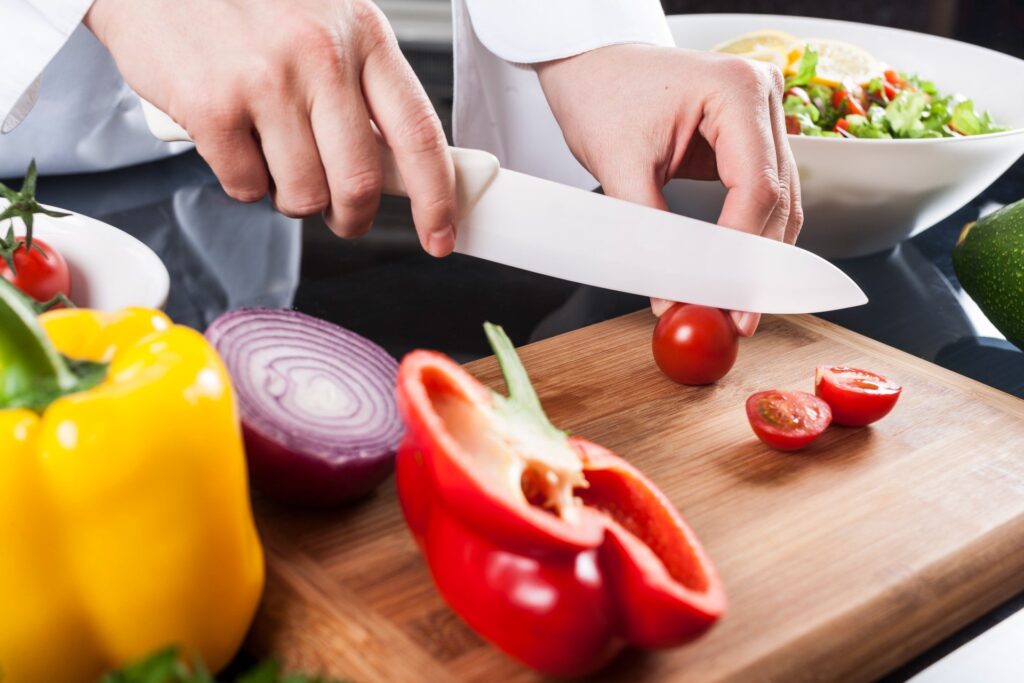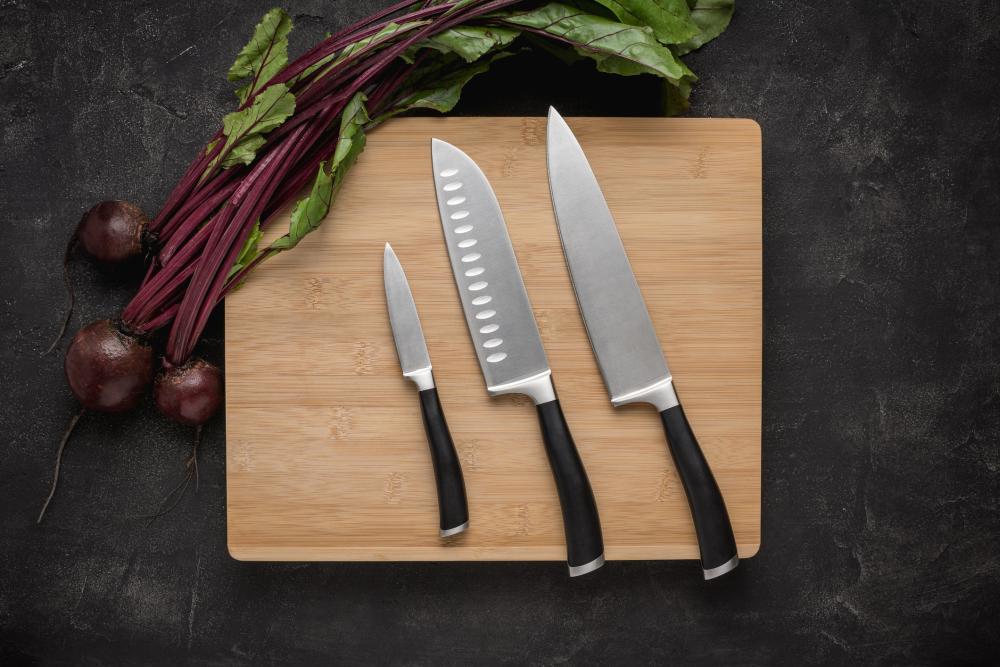Kitchen knives have several options. Ceramic knives are fashionable now. These knives are sharp, strong, and unusual. This page will explain ceramic knives, how they vary from regular knives, their pros and cons, and commonly asked questions.
What is a Ceramic Knife?
Ceramic Knife?
Zirconium dioxide (ZrO2), often known as zirconia, is used to make ceramic knives. Ceramic knives have all-ceramic blades. The blade, second only to diamonds in hardness, stays sharp longer. Ceramic knives with white or black blades are lightweight.
High-pressure molding and firing create ceramic knives. A blade made this way resists wear, rust, and corrosion. Ceramic blades do not transfer metallic ions to food, preserving taste and appearance.
The Benefits of Ceramic Knives

High Precision
Ceramic knives are sharp. Ceramic blades stay sharp due to their hardness. You may easily slice fruits, vegetables, boneless meats, and other things.
Easy to Carry
Ceramic knives are much lighter than steel knives. They’re easy to wield, especially during long cutting chores. Ceramic knives are popular with chefs and home cooks because to their lightweight design, which decreases hand fatigue.
Hygienic, non-reactive
Ceramic knives are non-reactive to food acids. They cut tomatoes and citrus fruits well. Ceramic blades resist microorganisms, making food preparation clean.
Low Upkeep
Ceramic knives are low-maintenance. Ceramic blades don’t adhere to food, making cleaning easy. Ceramic knives require less sharpening, saving time and effort.
Drawbacks of Ceramic Knives

Ceramic knife drawbacks:
Ceramic blades are sharp and durable, although they are more brittle than steel knives. Dropping a ceramic knife or cutting frozen or thick foods can destroy it. Ceramic knives need careful handling and storage to last.
Limited Versatility: Ceramic knives are great for cutting fruits, vegetables, and boneless meats, but not bones or frozen meals. If misused, the ceramic blade’s exceptional hardness might be damaged.
Professional Sharpening: Ceramic knives stay sharp for a long time, however they should be professionally sharpened as needed.
Sharpening the ceramic blade requires specific equipment and experience due to its exceptional hardness. Home sharpening a ceramic knife without the right tools and skills might ruin the blade.
Higher Cost: Ceramic knives cost extra. The sophisticated ceramic materials and unique manufacturing technique make them more expensive. Ceramic knives are durable and sharp, making them a good investment for kitchen tool enthusiasts.
Not Dishwasher Safe: Ceramic knives should not be cleaned in the dishwasher. Dishwasher detergents and high temperatures can damage ceramic blades. Ceramic knives should be hand-washed with warm, soapy water and a soft cloth. To avoid moisture, dry them before keeping.
Common Questions
Ceramic knives: dishwasher-safe?
Dishwashing ceramic knives is not advised. Dishwasher detergents and high temperatures can damage ceramic blades. Ceramic knives should be hand-washed with warm, soapy water and a soft cloth. To avoid moisture, dry them before keeping.
Do ceramic knives cut bone-in meats?
Ceramic knives cannot cut bone-in foods. When pushed too hard, the ceramic blade can chip or break. For bone-cutting, use a robust chef’s knife or cleaver.
Ceramic knife sharpness: how long?
Ceramic blades stay sharp longer than steel knives. Ceramic knives can stay sharp for months or years with proper care. However, the blade’s sharpness can be affected by usage, materials, and handling.
Can I home-sharpen a ceramic knife?
Professional sharpening is suggested for ceramic knives, but diamond sharpening stones or ceramic sharpeners can be used at home. Professional sharpening evenly sharpens the blade and prevents ceramic damage.
Ceramic or steel knives?
Ceramic knives cost more than steel blades. The sophisticated ceramic materials and unique manufacturing technique make them more expensive. Ceramic knives are durable and sharp, making them a good investment for kitchen tool enthusiasts.
Ceramic knives for lefties?
Ceramic knives are right- and left-handed. Their lightweight and ergonomic features make them easy to use regardless of hand dominance. The symmetrical blade and handle make the knife easy to use in any orientation.
Conclusion
Ceramic knives have distinct advantages over steel knives. Their sharpness, lightness, and hygiene make them valuable culinary tools. To avoid damage, handle ceramic knives carefully. Ceramic knives might be added to your kitchen equipment after considering their pros and cons.
Hand wash and dry ceramic knives, avoid using them for tasks beyond their limits, and consider expert sharpening. Ceramic knives can endure a long time if properly cared for.
